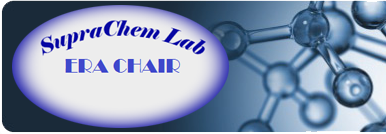|
Group leader:
|
PhD Cornel Cojocaru (ER chemistry)
|
|
Members:
|
PhD Adrian Fifere(PD chemistry); PhD Andrei Neamtu (PD MD);
Dragos Isac (PhD student chemistry); Tudor Vasiliu (PhD student biology)
|
In order to elucidate the behavior of Ion/water confined within the artificial channels or of hybrid biomolmecular platforms we will perform Monte Carlo molecular simulations. These simulations will help determine the subtle structure and ordering of molecules within the hierarchical structure. Once a clear picture of the adsorption and structure of confined ion/water channels has been obtained, we will study the diffusion of solutes using Molecular Dynamics. As in most practical applications, we will consider water transport in which transport is driven either through an electrical field ΔE and/or pressure gradients ΔP are applied to the system. We will first simulate electrical conductivity of water in the nanochannels by imposing an electrical field across the nanopore. Then, we will also consider nanopores that are open towards external reservoirs to simulate the situation where a nanopore is connected towards a larger pore (macropore). This will allow us to determine the subtle interplay between adsorption and transport within the system. We will also study the channels in a realistic lipid bilayer environment using long microsecond-timescale molecular dynamics simulations in an explicit fully hydrated membrane system. The stability and dynamics of the assembly will be tested first, probing different stoichiometries. Then the energetics of water transport will be assessed as in previous work on ion permeation. This will enable us to suggest modifications in the channel scaffold to modulate and improve water transport that can subsequently be tested experimentally. It is likely that the channel properties are temperature and lipid composition dependent, which will be tested as well. Once a full characterization at an all-atom level has been achieved, we will devise a coarse-grained model in order to be able to study larger assemblies and longer timescales. We can build on previous experience in coarse-grained modeling of complex membrane assemblies, for instance with modeling the influenza A viral envelope.
Supervision/trainer
Prof. Marc Baaden-Trainer
|



